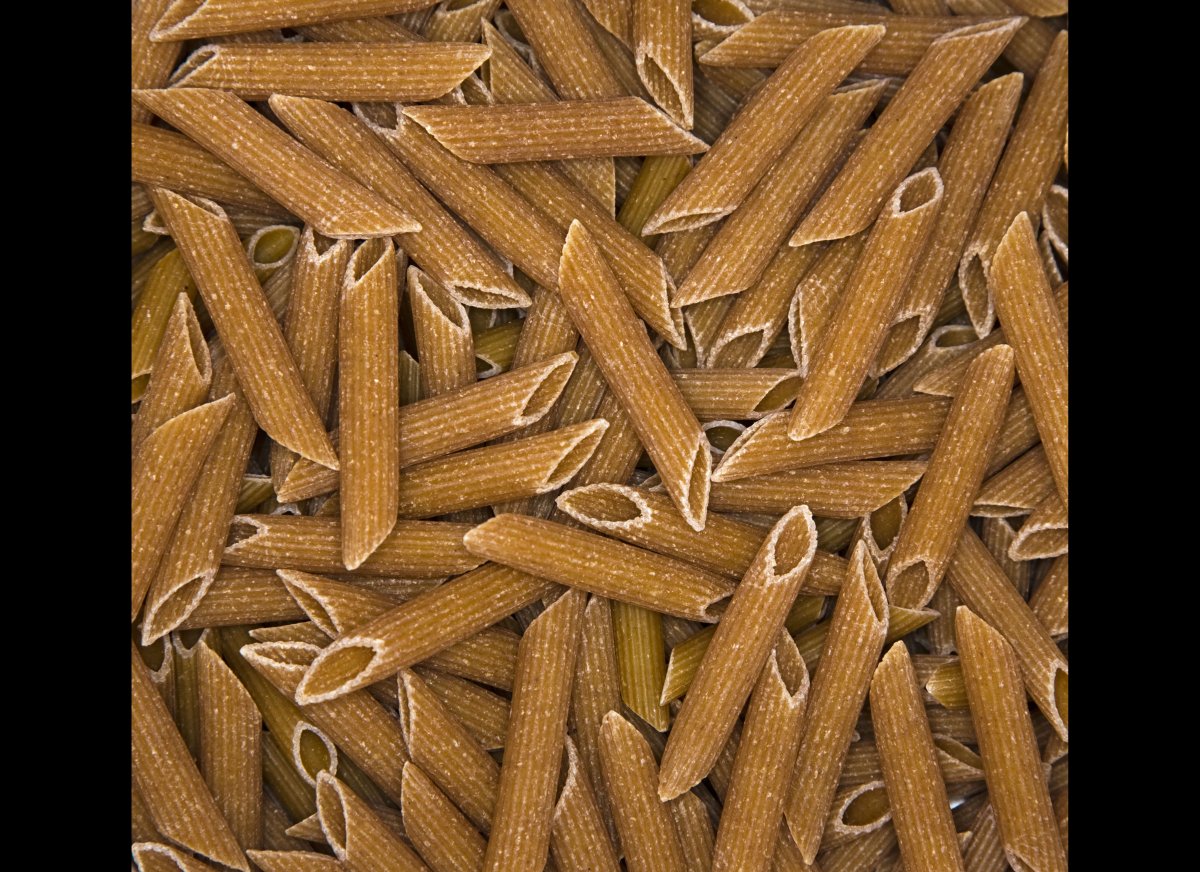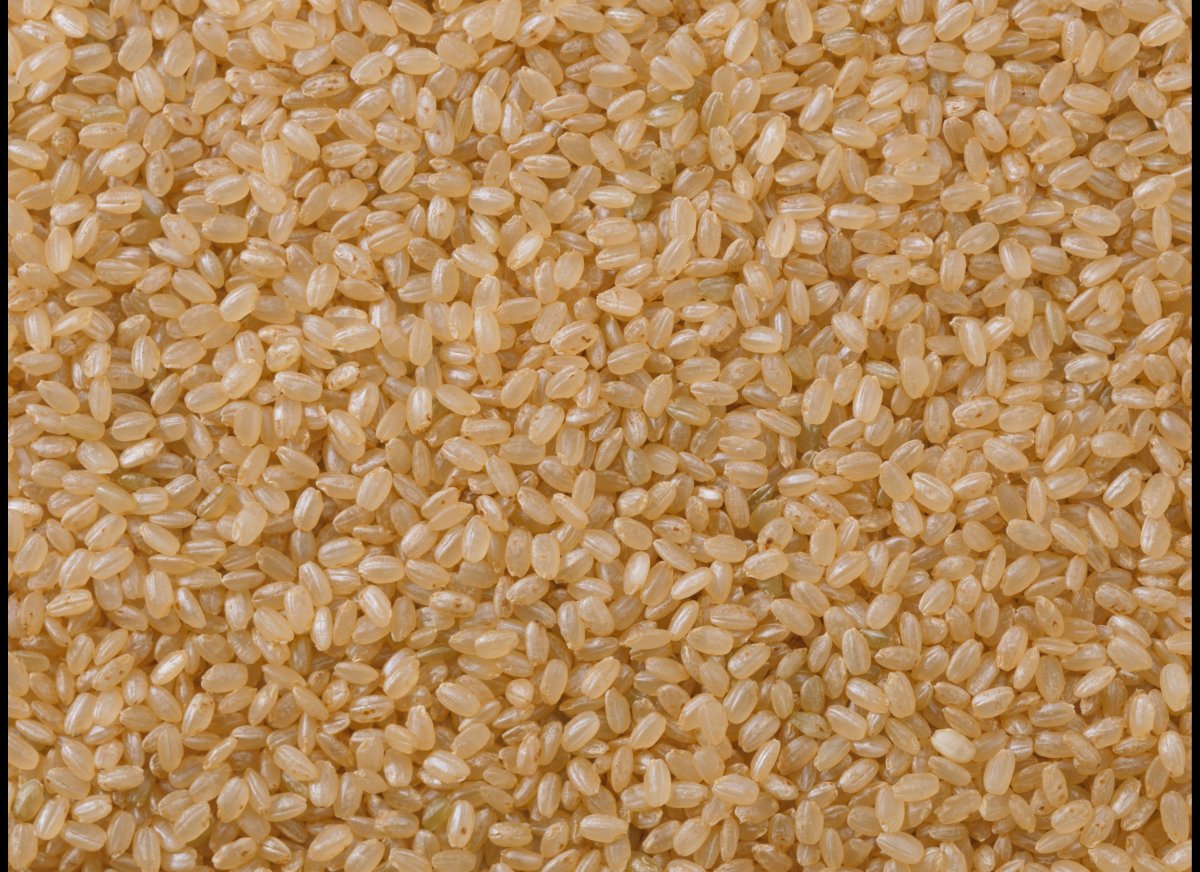This article contains some basic condensed knowledge about food. (Forked, so it can be adapted for a vegetarian diet too)
Water - your metabolism needs it. Have a full hand-held bottle nearby at all times. Drink liberally - most estimates of recommended amount fall between 3-5 liters per day (a lot more than what you will usually drink).
Infact, forget all other drinks, especially soft drinks and artificial juices. Most of them are sugary and will become fat minutes after you drink them. Replace them all with water.
Yes, even those "natural" artificial juices should be replaced. Unless you squeezed it yourself and didn't add any sugar, replace it.
Fibers improve food absorbtion. Commonly found in unprocessed plants. They help avoid hunger by increasing bulk, making you feel full. They also slow down sugar absorbtion which means that less of the carbs you eat will turn into fat. You definitely want them.
The main problem of modern food. You dont really need that much sugar. The brain needs some, but not nearly as much as most foods have. The amount most (non-raw) foods have really insane.
You can survive completely off of good fat and proteins and very little carbs [ref]. More about good fats below.
Not all sugars are equal, but they are all converted into glycose and enter the blood to be distributed. The glycemic index of food indicates the speed of this conversion. High GI means that the food will quickly be fully converted to blood sugar. Low GI means the processing will be slower and sugar will come more gradually into the bloodstream.
High GI food will quickly raise your blood sugar levels. Insulin will be released to keep the blood sugar level in control. If the sugar reserves in your muscles are full, insulin will begin the process of converting that sugar into body fat. This is the main way to gain extra fat. Its also sneaky. Even though on paper the calories are low, if the GI is high you receive them all at once in the blood and the body must correct the blood sugar level and must store it into fat.
Afterwards, all that sugar is spent or stored and you are hungry again.
Fortunately, after exercise or sleep, the body can also store some sugar in the muscles to replenish depleted reserves. So if you really must eat high GI foods, eat them after intense exercise or in the morning.
While the Glycemic Index tells you about the kind of sugar that the food is carrying (quick or slow to process), Glycemic Load gives you the amount of sugar in a serving of certain size. For example, if the food is 99% water and its GI is high, the GL of a normal serving can still be low. You will need to eat a huge serving to raise your blood sugar to any serious amount.
High GI food can be okay if the GL of the portion size you're planning is very low.
Useful Android app: Glycemic Index
Useful tables:
Not all fat you eat is bad - there are good fats are essential for your body.
- saturated (causes: diabetes, cholesterol, cardio problems)
- trans-fat (causes: diabetes, even worse cholesterol; practically poison)
Usually found in
- oils used in industrial cooking of processed foods.
- butter and margarine.
- beef, pork also have them, but not too much.
Among other things, they will ruin your metabolism.
- monosaturated (preventive for type 2 diabetes, better cholesterol).
- polyunsaturated (e.g. omega3, omega9) - benefit multiple parts of cardiovascular system
Usually found in
- flaxseed, olive oil,
- some plants. (todo: add plants here)
These keep you metabolism parts in a good working condition. There are also claims that it signals your body: hey, no need to store fat, we got plenty - this is kind of dubious though.
We're looking for food that
- has low GI (or very low GL) - less sugar turning into fat
- is mostly unprocessed (raw) and has more fibers that make us feel full
- has proteins - they're a better energy and muscle-building source
- has good fats - fats are essential to the body
We avoid food that
- is processed - less fiber that makes us feel full
- has a lot of carbs - they're not needed and turn into body fat
- has high GI - the higher the GI, the faster it will become body fat
- has bad fats - they're slightly poisonus and can cause health problems.
- Avoid long pauses between meals. Your metabolism enters conservation mode and tires to keep calorie (and fat) spending to a minimum
- Avoid big portions. You get more calories than you can spend (and as a result they all go into fat - see GI above)
- Have at least 3 meals. Eat snacks in-between - slowly.
- Eat more in the morning and less in the evening.
- In the morning your muscle sugar reserves are depleated. That means muscles can store the sugar instead of it turning into body fat.
- In the evening you wont have a chance to spend the calories - they will inevitably become fat
- Beans - green, white and all others - protein, fiber and low GI - metabolize fatty acids.
- Nuts - good fats and fatty acids, some vitamins, fiber, protein, low GI
- Almonds are best.
- Boiled Eggs - protein, fatty acids, no carbs
- Note: Dietary cholesterol does NOT increase your cholesterol, the egg scaremongers are wrong.
- Broccoli - vitamin C and fibers.
- milk - protein
- protein shakes - protein + some carbs (good for breakfast).
- yogurt - protein, bacteria
- vegetables salad (specific ones to be added).
- whole-weat pasta (lower GI, fiber)
- apples, pears, plums, oranges, grapes - low-ish GI and fibers, but sugary. They can increase your appetite
- pasta - high carbs, processed, but okay GI
- brown rice - has fiber, high-ish GI.
- bananas, kiwis - low carbs, medium GI, vitamins
- tomatoes - low carbs, medium GI, vitamins
- cheese and cheddar - processed stuff, okay proteins
- wholegrain cereal - carbs, high-ish GI
- muesli - same as cereal but better useful components.
- other food with medium GI (50-65) - see the tables.
- Bread. Its everywhere and you dont really need it. High GI, processed, carb bomb.
- Yes this includes all croissants, pastry, bun.
- Baked and boiled potatoes. They are like bread.
- regular rice (white rice). Its like bread too.
- Cereals. If you must, wholegrain or muesli and only in the morning.
- Sugar in coffee all day long (high GI)
- Replacement: Small pack of almonds/peanuts (energetic but low GI)
- Note that sweeteners have dubious chemical properties and are usually not recommended.
- Replacement: Small pack of almonds/peanuts (energetic but low GI)
- Alcohol. Blood sugar will skyrocket and go straight into fat.
- Soft drinks (high sugar, very high GI, goes straight into fat)
- Fast food (high in bad fats, high GI, high sugar, straight into fat)
- French fries (high sugar, high GI, bad fats - all in one)
- Chocolates and cakes - this should be obvious. They're fat in GI bomb disguise.
- Most of the basic mechanics are covered on CoachCalorie.com
- A good resource explaining GI is glycemicindex.com
- You can find out a lot about the contents of various foods on sites such as CalorieCount

